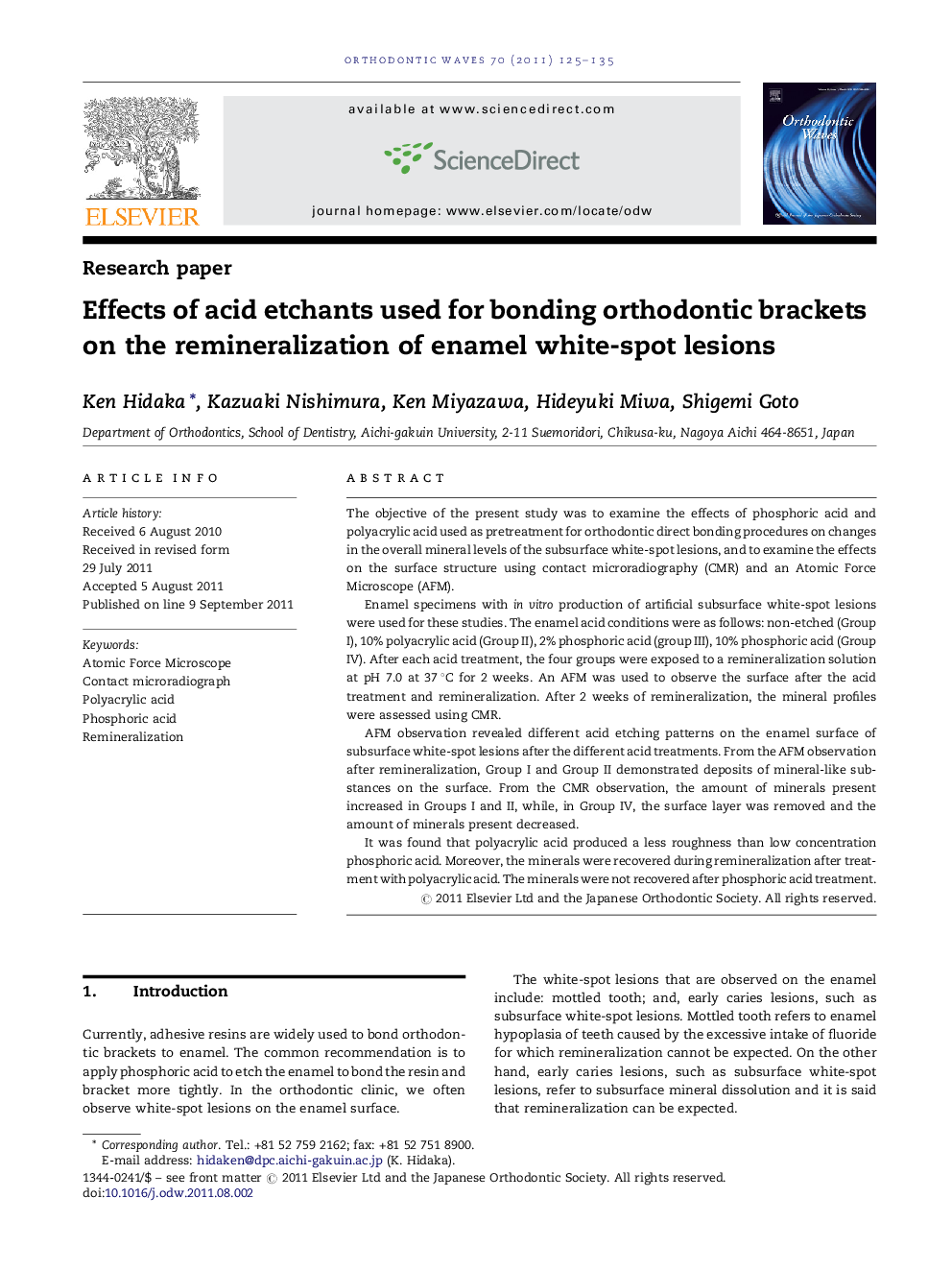| Article ID | Journal | Published Year | Pages | File Type |
|---|---|---|---|---|
| 3170424 | Orthodontic Waves | 2011 | 11 Pages |
The objective of the present study was to examine the effects of phosphoric acid and polyacrylic acid used as pretreatment for orthodontic direct bonding procedures on changes in the overall mineral levels of the subsurface white-spot lesions, and to examine the effects on the surface structure using contact microradiography (CMR) and an Atomic Force Microscope (AFM).Enamel specimens with in vitro production of artificial subsurface white-spot lesions were used for these studies. The enamel acid conditions were as follows: non-etched (Group I), 10% polyacrylic acid (Group II), 2% phosphoric acid (group III), 10% phosphoric acid (Group IV). After each acid treatment, the four groups were exposed to a remineralization solution at pH 7.0 at 37 °C for 2 weeks. An AFM was used to observe the surface after the acid treatment and remineralization. After 2 weeks of remineralization, the mineral profiles were assessed using CMR.AFM observation revealed different acid etching patterns on the enamel surface of subsurface white-spot lesions after the different acid treatments. From the AFM observation after remineralization, Group I and Group II demonstrated deposits of mineral-like substances on the surface. From the CMR observation, the amount of minerals present increased in Groups I and II, while, in Group IV, the surface layer was removed and the amount of minerals present decreased.It was found that polyacrylic acid produced a less roughness than low concentration phosphoric acid. Moreover, the minerals were recovered during remineralization after treatment with polyacrylic acid. The minerals were not recovered after phosphoric acid treatment.
